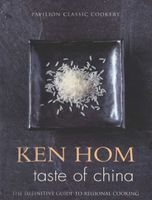Prue Leith's latest book is now on ckbk. Get 25% off ckbk Membership
Food for the Body and Soul: The Medicinal and the Vegetarian
By Ken Hom
Published 1990
Every culture has some saying equivalent to: “eat this - it’s good for you.” And every cuisine has foods that are held to cure ailments: “Not feeling well? Have some chicken soup — or some tea with lemon; or some warm milk with honey; or some dry toast.” (There are as many remedies as there are ailments.) What makes the Chinese equivalent of this practice so remarkable is that it has, through its history, raised the medicinal qualities of food to the level of a science and of a fine art. Certainly, in my own childhood experience, I knew that specific foods were cures for specific complaints. Instead of patent medicines for my early colds and “flu,” I was plied with medicinal foods. Most were familiar items in our diet: pak choi, Chinese broccoli, cabbages, bitter melon (a favourite), or various meats and sauces; some were rather exotic herbs and roots with names unfamiliar to me. All had specific uses, depending upon whether my body needed heating or cooling, whether I had an appetite or not, whether I had a stomach ache or a headache, whether I was apathetic or hyperactive. There was an edible concoction for every complaint. Instead of a prescription from the doctor, I was fed a specially prepared, always flavourful dish.
In this section
Advertisement
Advertisement


